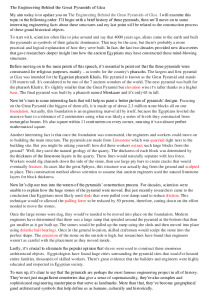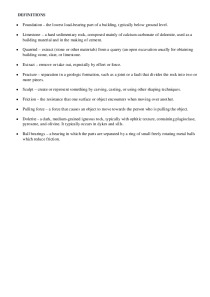The Engineering Behind The Great Pyramids Of Giza


The Engineering Behind the Great Pyramids of Giza. Definitions.
My aim today is to update you on The Engineering Behind the Great Pyramids of Giza. I will examine this topic in the following order: I’ll begin with a brief history of these pyramids, then we’ll move on to some interesting engineering facts about these structures and my last point will be related to the construction process of these grand historical objects.
Now let’s turn to some interesting facts that will help us paint a better picture of pyramids’ designs. Focusing on the Great Pyramid (the biggest of them all), it is made up of about 2.3 million stone blocks all on one foundation. Actually, this foundation is an engineering marvel all by itself, because the Egyptians leveled the massive base to a tolerance of 2 centimeters using what was likely a series of levels they constructed from rectangular beams. It's also square within 11 centimeters on every corner, meaning it‘s an almost perfect mathematical square.
Now let’s dip our toes into the waters of the pyramids’ construction process. For decades, scientists were unable to explain how the huge stones of the pyramid were moved. But just recently researchers came to the conclusion that Egyptians most likely used sleds that were pulled over damp sand to reduce friction. This technique would've allowed the pulling force to be reduced by 50 percent, therefore, cutting down on the effort needed to move the stones.
Lastly, it’s crucial to eliminate the popular opinion that slaves were used to construct these enormous architectural objects. Egyptologists have found huge cities surrounding the pyramid sites that would've housed entire families, thousands of skilled workers. There's great evidence that the builders and engineers were highly educated and respected in Egyptian society.
- Real Estate Essays
- Microsoft Word 17 KB
- 2022 m.
- English
- 2 pages (968 words)
- University
- Stud.h17

















